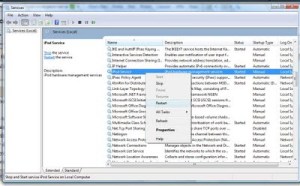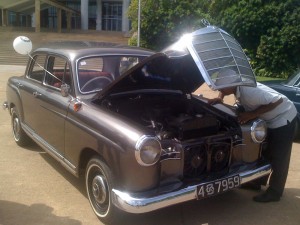Thursday, September 17, 2009
BlackBerry Network Diagnostic Tool
BlackBerry have provided a good tool named "Network Diagnostic Tool" which is essentially a role model that answers all these questions and is a functional diagnostic tool for testing a URL over various transports supported by the BlackBerry solutions, as well as for displaying the values of many network attributes during the test period.
You will be able to download it freely from BlackBerry knowledge base.
If you need to know more about the available transports and more in depth details on the network diagnostic tool, better visit the Article Number: DB-00684 at the BlackBerry knowledge base.
Setting APN Automatically
After some searching on the net I found one way to achieve this is by identifying the mobile network and then setting the connection properties appropriately.
The steps involved is as follows.
Step 1
Identify the network the phone is currently in.
If you need help on this go to this URL.
Step 2
Get the APN settings for your network.
The way here is to have a file with all the settings of different wireless service providers you intend to run your application on, and then compare the value returned from Step 1 and get to the particular APN.
I suggest you to keep a XML or text file with the following details of the service provider,
- Country Name
- MCC
- Carrier Name
- MNC
- TCPAPN
- TCPAPNUserName
- TCPAPNPassword
- WAPAPN
- WAPIP
- WAPPort
- WAPUserName
- WAPPassword
- WAPSourceIP
- WAPSourcePort
- IsEnableWTLS
Add the APN to the connection.
If you need help on this go to this URL.
Determining the Network
Basically in BlackBerry mobile network is uniquely identified by the Mobile Country Code (MCC) and the Mobile Network Code (MNC).
To get these details from your code what you have to do is to call
RadioInfo.getMCC()
and
RadioInfo.getMNC()
These will return the codes in decimal.
You can find a full list of MNC codes of the mobile phone operators and a list of country codes by following the following URLSs to Wikipedia.
http://en.wikipedia.org/wiki/Mobile_Network_Code
http://en.wikipedia.org/wiki/Mobile_Country_Code
If you need to access the BlackBerry knowledge base article describing the above process you can follow the following link.
http://www.blackberry.com/knowledgecenterpublic/livelink.exe/fetch/2000/348583/800332/1467358/How_To_-_Determine_the_MCC_and_MNC_of_the_current_network.html?nodeid=1467359&vernum=0
Sunday, September 13, 2009
Setting APN
APN or Access Point Name is a setting which needs to be set on the mobile when we need to get connected to internet using the phone.
APN changes from one mobile service provider to the other. For example Dialog will have http://www.dialogsl.com/ Rogers will have internet.com set as their APN.
But letting users set the APN manually is always not the preferred way. Recently we developed an application for BlackBerry which the user needed to get to the internet without he manually setting the APN. The application was supposed to be delivered through BlackBerry App World so manually setting APN was not an option. In a case like this what you have to do is set the APN programmatically into the connection.
String URL = “www.SomeServer.com”;
StringBuffer bfURL;
bfURL = new StringBuffer ();
bfURL.append (URL);
bfURL.append (";deviceside=true ;apn=internet.com");
bfURL.append (";tunnelauthusername=UserName;tunnelauthpassword=Password");
String FinalURL = bfURL.toString ();
In the above code I have set the Rogers APN in to this connection.
If you need more details on the parameters used or need to know about the other parameters you are eligible to use such as WapGatewayIP, WapGatewayPort, WapGatewayAPN, etc visit the following link to view full details of the connector class.
http://www.blackberry.com/developers/docs/4.2api/javax/microedition/io/Connector.html
Tuesday, September 08, 2009
Benz Show 2009
Recently I managed a project which targeted iPhone and SharePoint server. This was a project for Dimo who are the dealers for Mercedes Benz in Sri Lanka. Total software services were provided by IronOne Technologies.
When we finalized the technologies I thought that this project will be an interesting one.
But the real interesting part was on the day when I saw all the Benz models present on the day. Even though I have seen international car shows before this, this is the first time I have seen this much of cars of the same manufacturer on the same place live.
You will agree after you see the photos.


Sunday, September 06, 2009
SharePoint Content Placeholders
I think I got this from Microsoft. Thanks Microsoft.
Hope it helps to you.

Friday, September 04, 2009
iPhone / iPod Not Shown in iTunes


-
Normally in ASP.Net TreeView you can enable it to show checkboxes in its node levels. So if you need to do any actions when a node is checke...
-
Recently one of my computers had an issue with the Windows Explorer. It was crashing constantly when I try to click, right click or hover on...































